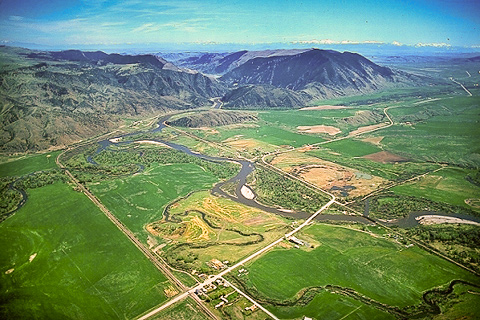On 1 August 1805, Clark and the expedition’s flotilla of eight dugout canoes pushed up the Jefferson River through “a verrey high mountain which jutted its tremendious Clifts on either Side for 9 Miles, the rocks ragide.” They emerged into this “wide extesive vallie,” and camped that night on the south (right) side of the river, opposite the mouth of “R Fields Valley Creek”—today’s Boulder River (left).
The maps of John Evans, which Lewis and Clark had gotten in St. Louis, depicted the Rocky Mountains as four separate chains, among which the headwaters of the Missouri River flowed. From their water-level perspective, the captains had already identified the first gate, at a landmark Lewis called simply “the tower” [Tower Rock] The more spectacular canyon that he named “the gates of the rocky mountains,” which is still one of the main tourist attractions on the expedition’s route, really didn’t seem to fit into Evans’s crude map, so the next gap, some 35 miles downriver from the Three Forks of the Missouri, qualified as the “Little Gate of the Mountain.” This canyon separating the low range now known as the London Hills from the northwest end of the Tobacco Root Mountains, appeared to them as the “3rd mountain gap,” and Clark so labeled it on his sketch map of the area.
For more, see on this site The Jefferson Canyon.
From Discovering Lewis & Clark from the Air
Photography by Jim Wark
Text by Joseph Mussulman
Reproduced by permission of Mountain Press

